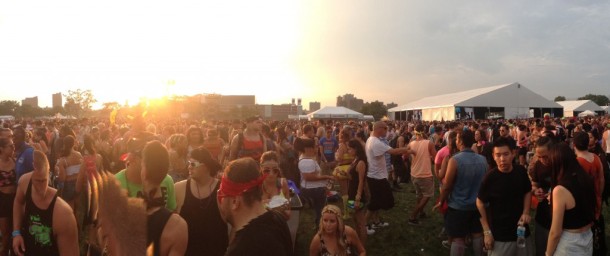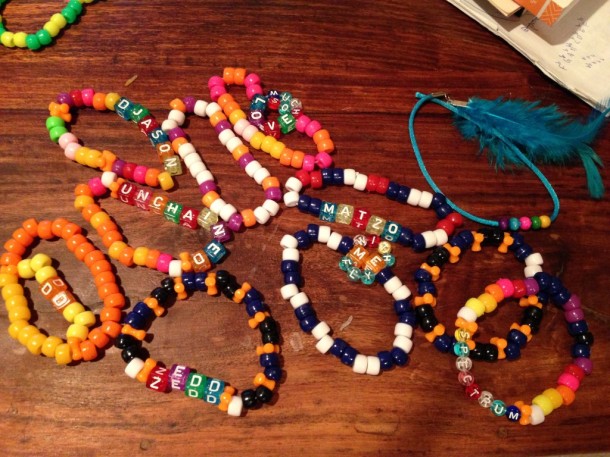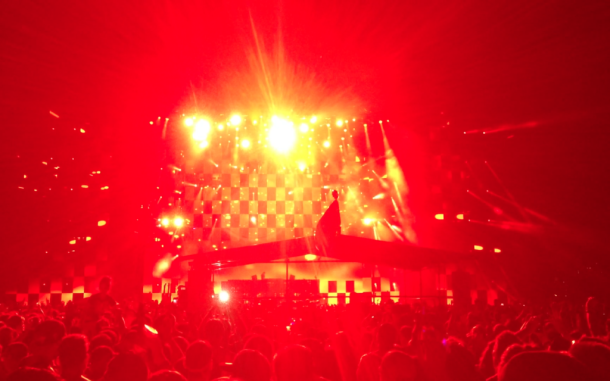It was Labor Day weekend in New York City. Award-nominated EDM festival Electric Zoo was gearing up for another solid lineup of high-profile DJ and electronic acts. Everyone was excited for Saturday’s opening events.
But the excitement was short lived.
Suddenly that day, after two tragic over-dose related deaths and four other hospitalizations, the much-hyped dance party was cut short. Sunday’s shows were canceled, and the mass media quickly denounced Electric Zoo as a negative event, and spread numerous rumors, including the details of a decade-old scandal about event founder Mike Bindra.
Amidst all that, I was there with at least 50,000 other ravers getting hyped about the moment: you know, the one that precedes “the drop” inciting you to go “bananas” to the beat.
It was going to be 12 hours per day of non-stop ecstatic dancing. But to our chagrin, we never got that second day. And that’s troubling.
The electronic festival experience is especially empowering to a newly-converted raver. I’m still fresh to the scene, and keen to the details that surround rave culture. It’s exciting to me. So I want to share my perspective with you and give you an inside look at what’s happening now, and why we shouldn’t let the event of an overdose kill the vibe.
The Vibe
During the first two days of E-zoo, as Electric Zoo is called by fans, nearly 100 sets were played across five stages set up on New York’s Randall Island. The entire island was suitable for the thousands of attendees, and looked beautiful when it was illuminated by light shows after the sun set. The dazzling gamut of light-work astonished most on the two main stages where lasers flashed to the beat. (The support stages offered a smaller-scale 3D-screen light-show.)
The festival ambiance was occasionally like that of Disneyland but with more hardcore fireworks marking the finales.
A few yards away from the stages, in the rest area, a wide array of gourmet street trucks served food. The well-lit mobile eateries, coupled with neon-lights that hung up on trees nearby and around decorative animal sculptures rising against the skyline of New York, made the place entirely, mesmerizingly romantic.
And that’s all before mentioning the soundtrack.
If your heart was already fluttering from the scenery, hearing big-name, respectable artists like Madeon, Avicii, Dada Life, Tiesto, Hardwell—you name them, they were there—while moving through the E-Zoo decor and the crowd of energetic people was like escalating your delight to an out-of-body experience.
Or so you thought, until that aforementioned drop notched-up your euphoria to an unprecedented 11.
The music accelerates; the tone pitches high. And abruptly, you know you’re in for a ride. The overkilling bass encases you, and your body starts to vibrate in kind with thousands of other bodies.
It doesn’t matter if you know the song, or if you usually dance. The power of the music overrides any sense of self-consciousness, and you stop worrying totally. You feel the imminent urge to dance to the beat and have a great time.
And if do you recognize a song, you sing along to the uplifting pop tune and feel the power of the moment, as you do in any other large concert.
But most important, you feel the pulse regardless of if you’re rolling or not.
The day after the tragic deaths, Dada Life wrote on their Facebook page, “music is the strongest drug ever. It’s also 100% safe. Keep doing music.”
And that’s the key to raving, as I see it.
Have You Seen Molly?
Molly, although recently revamped and popularized thanks to its glamorous mainstream music fan base, has been a buzzword for MDMA since the 80s. The Molly brand is a powdered, more potent form of the psychoactive amphetamine MDMA. And it still boasts the same effects. MDMA’s boasting point is that enhances your body senses and allows you to feel a higher degree of affinity to the world around you, without all the uncertainty of a hallucination side effect. At its purist form, besides in a fine powder, you might find it crystallized.
MDMA is also known as the more familiar ecstasy, but never has it been distributed as in the way it is today. It is rumored that Molly dealers often cut drugs like meth or heroine into their product, making pure Molly a rarity. So unlike the stamped pills from the 90s, it is really hard to distinguish an authentic powder from a blend.
If a tablet is handed your way, you can avoid an imposter compound by recognizing a certain kind of stamp.
But the premise, here, is that you really never know what you are getting, and that’s why Molly is dangerous.
It felt unreal when I saw pictures of the two tragic overdose victims on the Internet, because I recognized their faces. I had seen both of them up close during the first two days of the event. Allegedly, one victim approached the medical staff and said she just popped six mollies before passing out.
Brutal reality kicked in. I–and I imagine many other fellow ravers–started to question our scene and our culture.
Why was this street drug taking Molly over?
And what’s attractive enough about it to get it name-checked in the lyrics to our favorite songs; the ones that concert goers sing along to?
Unfortunately, Molly is trending. It’s everywhere now. But how do we counter the hype? And who’s accountable?
Many who saw and read about the festival deaths will, in the heat of the tragedy, take the easy, initial way out and target the entire dance party. If there were no dance fests like Electric Zoo, they’ll say, then these overdoses wouldn’t happen.
But simply blaming an event organizer or the larger EDM music community is too simple and discriminative. You can’t stereotype the entire community based on a minute sample size magnified. And negative, impulsive accusations will only counter efforts to find a strong, lasting solution to overdosing.
Starting a drug war on and within the EDM music community is really overlooking a lot of positive attitudes and practices that rave culture supported.
So before we dismiss the dance scene as a way to waste your life too fast, let’s step back and look at the origins rave culture: where it all started, and its community-oriented ideologies.
P.L.U.R.
DJ Frankie Bones was the name.
It was Bones who started it all: the original New York rave scene and the P.L.U.R. movement. It was the early 90s, and Bones’s STORMrave series had just started. He brought the British “Summer of Love” hangar concert back to the U.S., and it was, as they say nowadays, a banger.
Word is that at one of the raves featuring over 25,000 people, a fight broke out. But Bones wasn’t having violence at his show. He balked, and refused to begin his set until the large crowd pledged to “show some peace, love and unity.”
Thus marked the beginning of the P.L.U.R. (Peace Love Unity and Respect) movement.
“Right from the very start of New York City’s underground rave scene,” said DJ Bones, “the mission was to make sure the people involved would be peaceful, have love for what we were doing and show unity if something was to go down.”
And today, I believe the 90s rave creed of P.L.U.R. lives on. It’s not a Fight Club, or a wicked Basketball Diaries scene. I witnessed the system of respect and joy still at its height at this year’s Electric Zoo. Kandi kids and rave fans sincerely embraced P.L.U.R. The camaraderie showed, from ravers’ radiant, friendly clothes to their ritual civil greetings.
Wearing handcrafted bracelets made of neon-colored beads, I saw the signature P.L.U.R. handshake that preceded the communal exchanged of bead bracelets.
It happened right in front of me. And it is utterly sad to see this unconditional, all-loving community associated with outliers’ abuse of Molly, and isolated O.D. incidents. But I guess when bad things happen to a few people in the population, it stands it out. Unfortunately, it brings down the entire community.
And that community includes our dance venues. Even the event organizers and venues can’t be held fully accountable for someone else’s defiance. It is very hard to prevent anyone from bringing drugs in when then choose to, even with the deterrent of a scrutinized security check point. There are still a variety of ways to hide it on your body.
And the kicker: who’s to prevent anyone from popping molly before entering the fest? You can’t preempt a rebel that’s rebelling off your property.
So what should we do? How should we counter the Molly craze?
Music Is the Strongest Drug and 100% Safe
Ultimately, the solution comes down to intelligence, awareness, and personal accountability.
You see yet another televised case of drugs gone wrong at a party. But blaming the event is not the answer. We can’t shut down an amazing, beautiful, festival like Electric Zoo because of a negative incident. We can’t just ban it because we don’t understand it.
We have to reflect and recognize that we, the concert goer, the venue agents, and the DJ, ought to be more responsible in multiple ways.
Instead of an impulsive retaliation that mimes the impatience of the drug-consuming victims, we need take a breath, and educate everyone with facts and information about drug-use rather than moving to start a full-on drug war.
Acknowledge the will of the people: you can’t crush natural curiosity! But you can curb it toward better, more life-affirming options. What if those two who overdosed knew that focusing on the pulse of the music was the purest way to deviate from the negativity that drove them to overdose?
It my responsibility listen. And in some ways it is your responsibility, and the staff’s responsibility to inform the other. It is our responsibility as a community to encourage and care for our friends. We need to look deeper at the P.L.U.R. mentality, and recognize that the euphoria isn’t a quick trip; that it exists beyond the concentrated substance that comes and goes.
Friends need to look out for potential O.D. symptoms. And the U.S. dance fests should take a cue from Prague’s rave protocol, and set up a testing booth for Molly to ensure absolute safety.
But again, in the end, there’s only so much that someone else can do to protect you from your own decisions.
It all boils down to the concertgoer: we must be responsible for ourselves, and our health. How can you feel high if your internal system isn’t working well? Take care of yourself.
And keep in mind, drug related deaths are not only seen in the EDM community. It’s a tragedy that’s broadly applicable to many scenes.
UK Producer Mat Zo understands the universal implications of using. Following the E-Zoo tragedy Zo wrote a provocative plea on his Facebook page about responsibility and accountability when using.
“If you’re going to take drugs, respect the people around you and everyone else but most importantly respect yourself! You don’t have to use drugs, but obviously some of you are. I’ve seen so many news stories recently about people doing MDMA or drinking too much and either dying or being a complete dick eg. smashing car windows. So i beg you, don’t do stupid shit that could harm yourself or other people, cus you’re ruining it for the decent majority of people who just want to have a good time. The mass media has already made people think raves and dance festivals are neon satanic hell holes, do you really want to fuel their campaign? Please stop f**king sh*t up, thank you.”
So let’s stop f**king sh*t up, and start concentrating that Dada Life mantra, which reminds us why we go to festivals in the first place.
MUSIC IS THE STRONGEST DRUG AND 100% SAFE.
KEEP DOING MUSIC.
If you’re inspired to kick a detrimental drug habit, or want to help a friend who might be under the influence, check out this helpful website to learn about street drugs and how to react to drug abuse:
Photos and words by Jason Jia












Leave a Reply